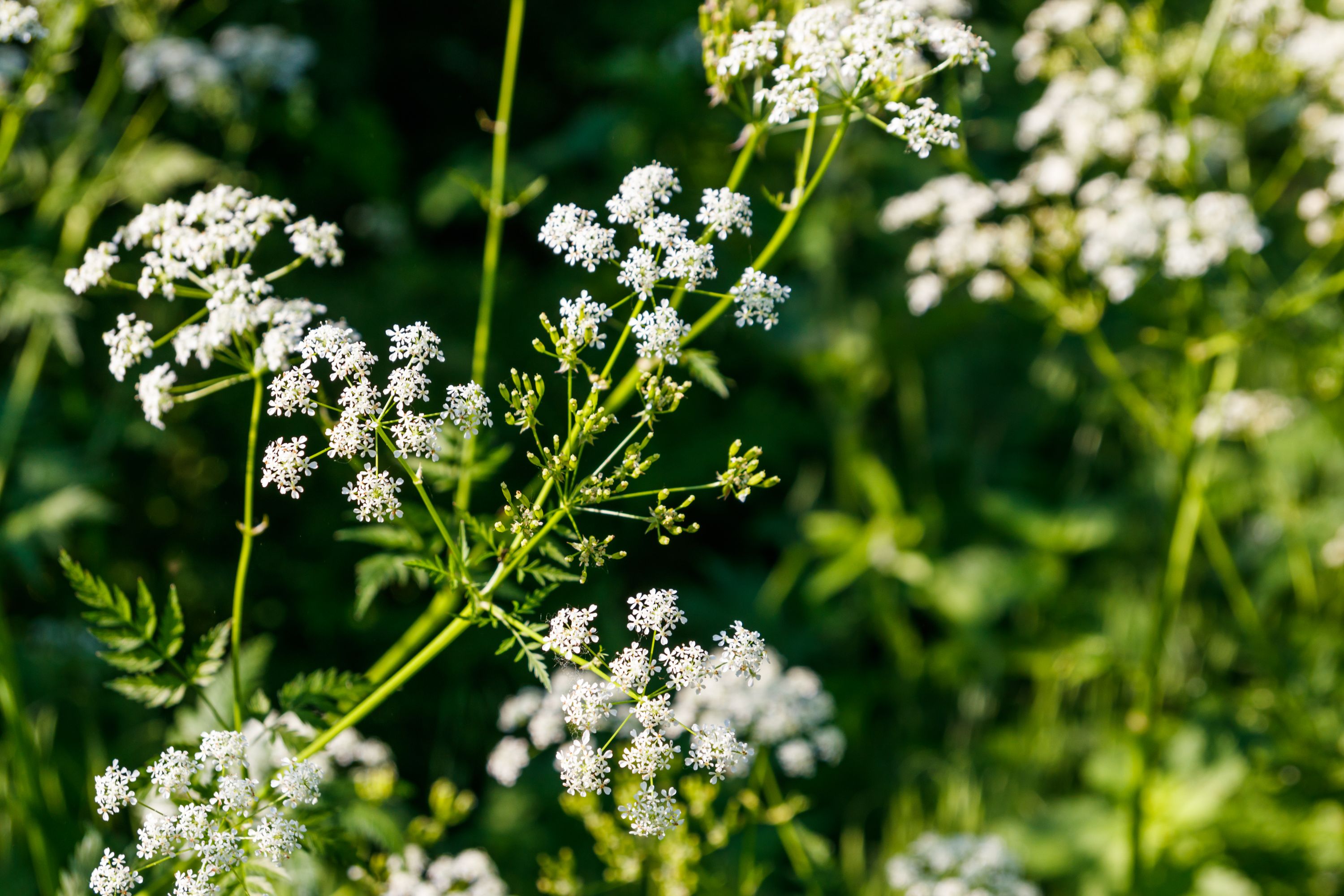Hemlock
(Conium maculatum)

Description
Conium maculatum, colloquially known as hemlock, poison hemlock or wild hemlock, is a highly poisonous biennial herbaceous flowering plant in the carrot family Apiaceae, native to Europe and North Africa. A hardy plant capable of living in a variety of environments, hemlock is widely naturalized in locations outside its native range, such as parts of Australia, West Asia, and North and South America, to which it has been introduced. It is capable of spreading and thereby becoming an invasive weed. All parts of the plant are toxic, especially the seeds and roots, and especially when ingested. Under the right conditions the plant grows quite rapidly during the growing season and can reach heights of 8 feet (2.4 m), with a long penetrating root. The plant has a distinctive odour usually considered unpleasant that carries with the wind. The hollow stems are usually spotted with a dark maroon colour before the plant dies and becomes dry and brown after completing its biennial lifecycle. The genus name "Conium" refers to koneios, the Greek word for 'spin' or 'whirl', alluding to the dizzying effects of the plant's poison after ingestion. In the vernacular, "hemlock" most commonly refers to the species C. maculatum. Conium comes from the Ancient Greek κώνειον – kṓneion: "hemlock". This may be related to konas (meaning to whirl), in reference to vertigo, one of the symptoms of ingesting the plant. C. maculatum, also known as poison hemlock, was the first species within the genus to be described. It was identified by Carl Linnaeus in his 1753 publication, Species Plantarum. Maculatum means 'spotted', in reference to the purple blotches characteristic of the stalks of the species. Conium maculatum is a herbaceous biennial flowering plant that grows to 1.5–2.5 m (5–8 ft) tall, with a smooth, green, hollow stem, usually spotted or streaked with red or purple on the lower half of the stem. All parts of the plant are hairless (glabrous); the leaves are two- to four-pinnate, finely divided and lacy, overall triangular in shape, up to 50 cm (20 in) long and 40 cm (16 in) broad. Hemlock's flower is small and white; they are loosely clustered and each flower has five petals. The plant looks like the wild carrot plant (Daucus carota). One can distinguish the two from each other by hemlock's smooth texture, mid-green, quite vivid, colour and typical height of large clumps being least 1.5 metres, twice the maximum of wild carrot.
Taxonomic tree:







